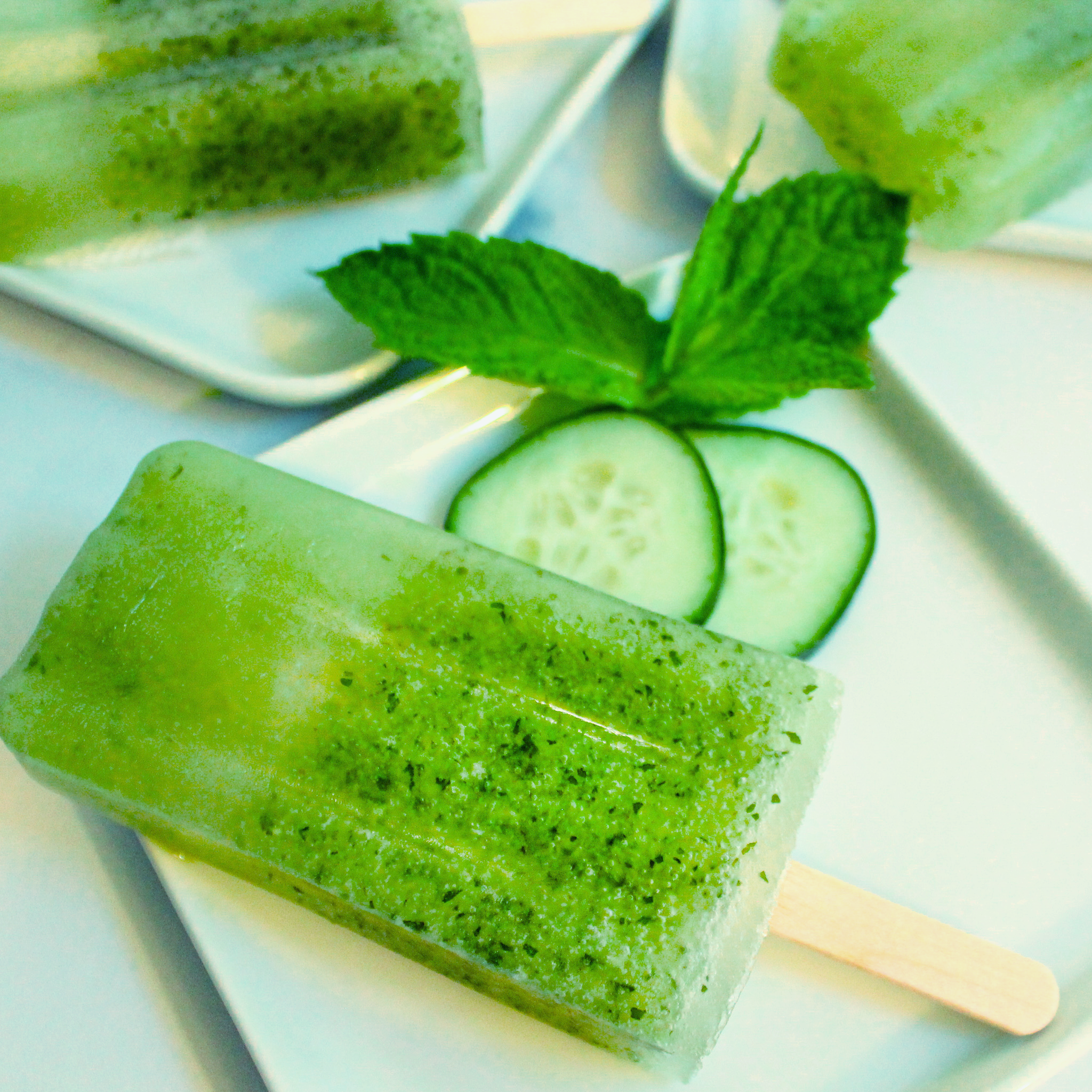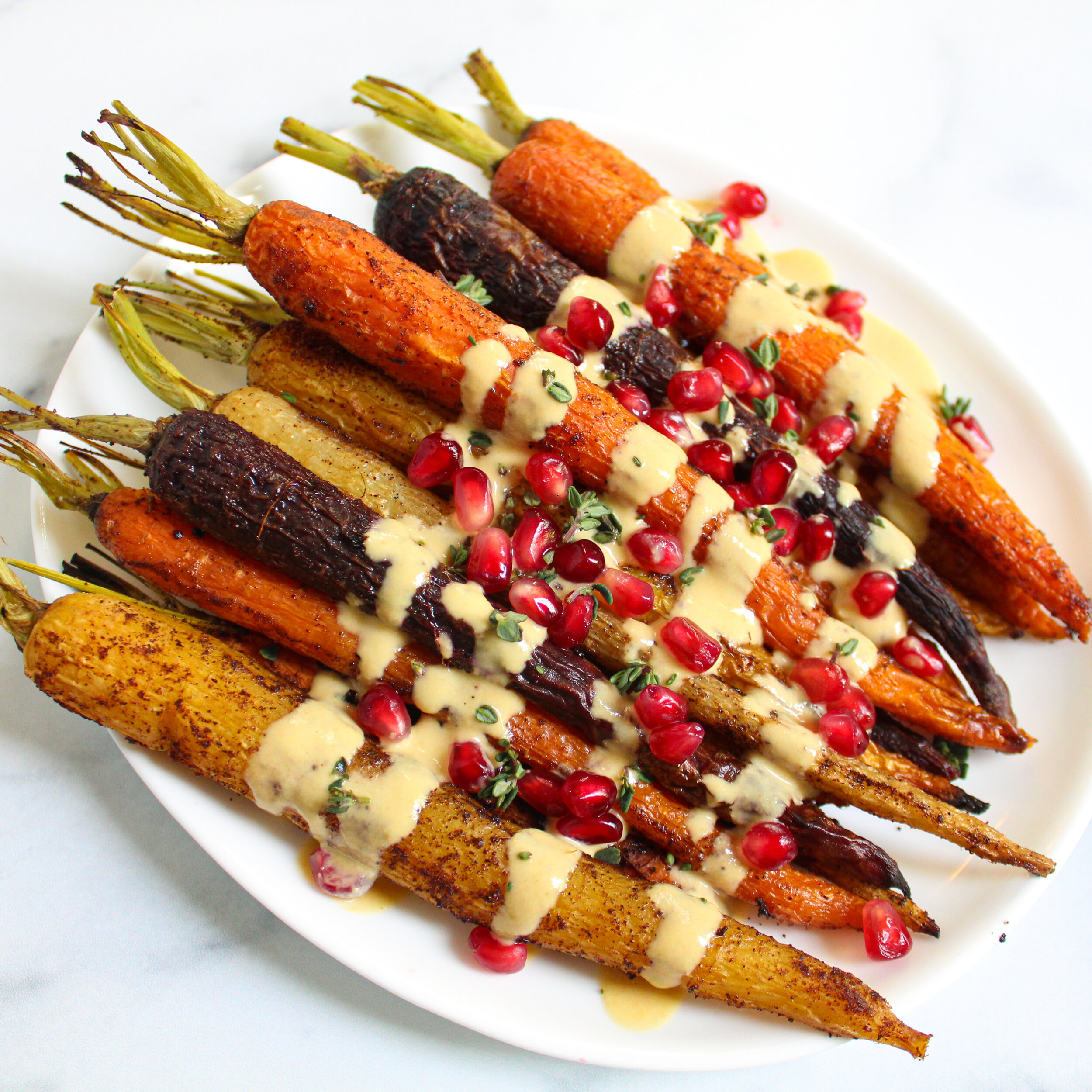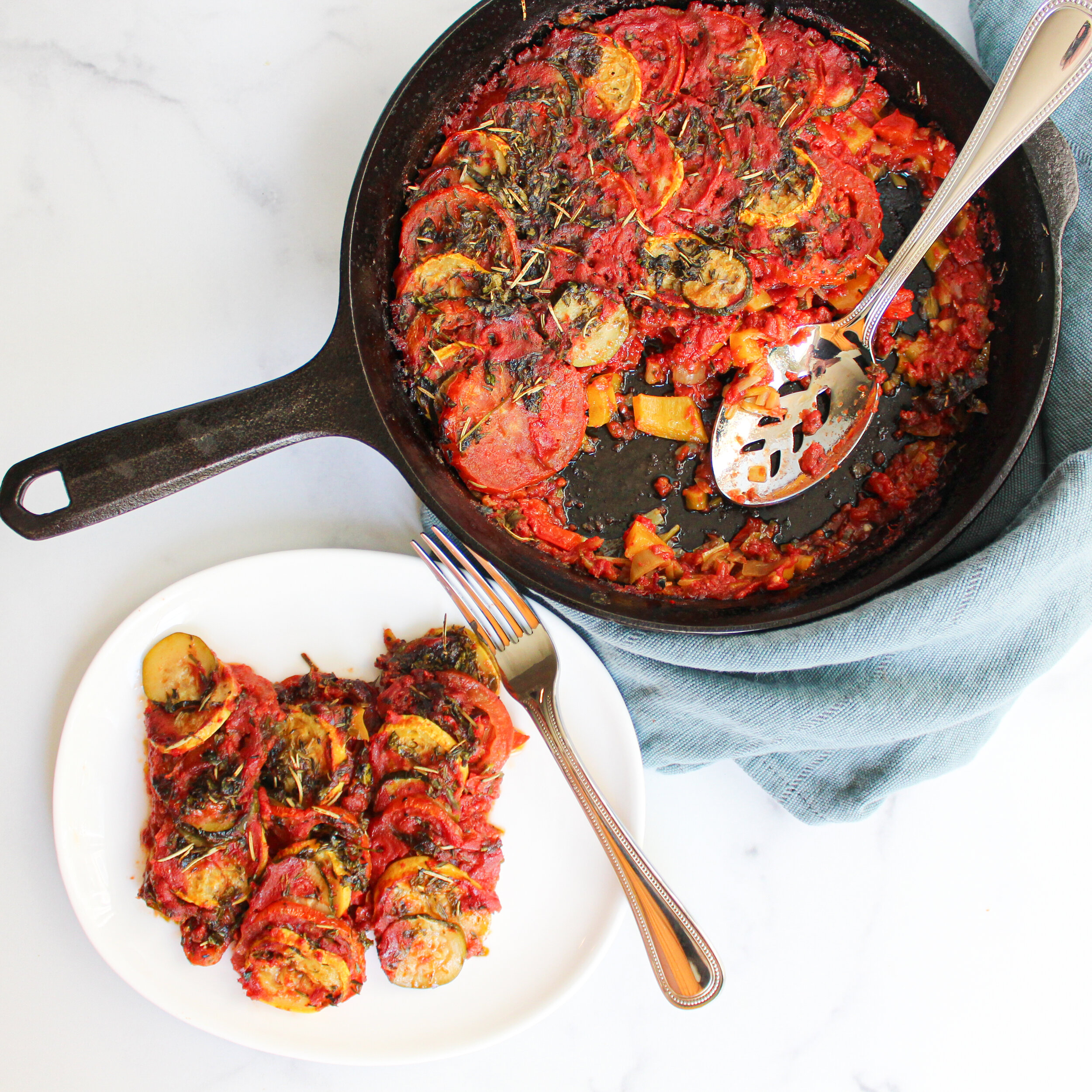We’re aware of the toxins that can build up in our bodies, say from eating lots of refined sugar or processed foods. We also know about the havoc this can wreak on our health. What many of us tend to overlook, however, is how our minds are also susceptible to toxicity. “Our mindsets can also be affected by toxins building up, through the accumulation of toxic thoughts,” says certified career and executive coach, Keren Eldad (whom we and her legions of fans call ‘Coach Keren.’)
Nagging and harsh narratives that play out in our heads, like I’m not good enough or I will never be successful are what Coach Keren calls “junk food thoughts.” They may seem banal, but their impact is harsh—and they can get in our way of living a truly authentic and happy life.
Enter ‘The Mindset Detox,’ Coach Keren’s brilliant strategy for freeing ourselves from toxic thoughts. It’s accessible to everyone and—as she outlines in conversation with Nichole here—an incredible antidote to overwhelm and unhappiness.
A Conversation with Coach Keren Eldad
What is ‘The Mindset Detox’ and why is it important?
The Mindset Detox is simple, and so important and relevant for everyone. The reason why a mindset—the established set of attitudes held by someone—“detox” is critical to most is because most people need one. Most people are feeling stressed, stuck, and just feeling like they are not living to the fullness of their potential. The latest Gallup poll and American Psychological Association figures consistently show that north of 60 percent of U.S. adults are feeling daily stress and worry, and this is just one area in which most of us could use a bit of a “cleanse” (to borrow from detox terminology).
We hear a lot about detoxing the body; about how there are chemicals in food that can be harmful, how pesticides can affect us, and how bacteria can build up in our systems. We hear about the perils of gluten, and sugar, and caffeine, and we are aware that the consumption of these can fill our bodies with harmful toxins, which can cause us to feel bad, or to at least not be in optimal health. Many of us are also aware that in order to alleviate the results of toxin buildup, many experts recommend a deep cleansing to help rid those toxins, and get you feeling better.
My theory is that in the same way, our mindsets can also be affected by toxins building up, through the accumulation of toxic thoughts. Junk food thoughts, like I can’t get well, I won’t forgive this person, there isn’t enough time to catch up, and everyone else is doing so much better than me. If this rings true or familiar with anyone out there reading this, I believe the solution (or at least, the beginning of the solution) is The Mindset Detox.
Specifically, you may want to work your way out of the five most common negative patterns of thought that I have seen, as a certified coach and as a suicide counselor with CTL, towards undoing them and getting past them. These “toxic five,” based on my work with over 500 top-tier leaders and my years of experience as a crisis and suicide counselor are judgment, insecurity (self-judgment), negativity, blame and resentment, and impatience.
What is the best way to go about The Mindset Detox? Where do we start?
The best way to START is to recognize that we are not entirely happy. This is very hard to admit – but just as any search for a cleanse or cure begins in the body, it must start with the awareness of what does not feel so good. When we can identify that there are anxious thoughts we could live without, that guilt plagues us, or that we constantly compare ourselves to other people, or that we tend to blame others in moments of stress – we can also begin to target these and begin to do the work to unwind our mindsets from these patterns. In other words – to detox.
This depends on two things: 1. Admitting that you do not feel 100 percent great all the time, that you do not “have it all together,” that you do not know everything and that you could use some help or work on learning something new around here, and 2. Being able to welcome some uncertainty and discomfort into your life for a brief period while you go through your detox. Just as for most people (if they are anything like me) a cleanse is a shift that requires some effort and discomfort, same thing goes for a mindset detox. We have to relinquish old, habitual patterns of thought that will not just roll over and die. It will require a period of internal work. The good news is, with a great coach and excellent support system, this goes easier. In fact, you may even enjoy the learnings and the process of tackling and detoxing from each of the aforementioned five.
What are some ways to identify toxic thoughts?
It’s pretty easy to identify them but clearing them out is an entirely different matter. I am not too sure a clearing out of brain space is possible, at least not entirely, but a shift in focus IS–and that is what a detox is about.
Let’s begin with identification. I’m fairly certain, as I speak to people day in and day out about thoughts that trouble them, thoughts that scare them and thoughts that seem to feel heavy, that most people know what I’m talking about and can identify these very readily. But let me get specific here to give you some examples: When we dwell on how somebody hurt us or how something set us off our course.
When we make constant comparisons, dwell on blame, harp on and on about how we never get ahead, on how we have been at this company for so long but don’t think we are being appreciated or are getting anywhere, and even on how terrible 2020 was – we are thinking toxic thoughts. If we let such thoughts linger without check, they will infect our entire lives, affect our attitude and self-image, and they will become a part of who we are.
Like me, you probably know people who have let their toxic thoughts run away with them. They are bitter, cynical, sour, constantly complaining, stressed, anxious. They are probably also stuck in a negative rut–perhaps in a bad relationship, or perennially single, perhaps constantly in debt or going from job to job, and so on. Why is that? It’s because they let those thoughts take root. By now, their negative—or toxic–patterns of thinking - have not only become who they are, but self-fulfilling prophecies.
And if you are honest, you probably also identify some such thoughts in YOU. These thoughts come to us all. What is of extraordinary value is our ability to identify them, our willingness to experience or sit with them, and our desire to learn how to focus our mind more on what we DO want to think than on what we DO NOT want to think. This is the work of the detox.
How can we start to shift our focus?
To unpack all patterns of toxic or negative thought would be too elaborate here, but let me begin to help you shift your focus from a negative thought with my number one favorite mindset-shifting exercise. I call it the Pause Principle. Here is how it works:
Every time you hit an obstacle or challenge from now on, I want you to do this: DO NOTHING. Literally hit pause. In this moment, take three steps:
Turn Inward. Recognize your reaction is the real enemy. Getting defensive, angry, jumping to conclusions–these are the actual problems. The tip off will be negative emotion. Stop yourself right there.
Question. Ask yourself: “Is what I see or how I see it the absolute truth? Is this the full story?” If not -get curious.
Reframe. Ask yourself: “How can I see this as an opportunity?”
What is an example of a moment when you have integrated this into your life?
A couple of years ago, I was seated on a flight from Miami to NYC, next to my friend-Latin American TV host Lili Estefan. We sat, we chatted, we drank wine. I was on top of the world. Then, that terrible thing happened. The one that sets us all off – even normally calm people: The plane got grounded, and we were asked to get off the plane.
This truly incurred my wrath, first because I thought I would be late getting home, and mostly because I was in first class, and sitting next to a celebrity. But as we disembarked, I did that PAUSE in my head.
In the pause–I first noted to myself that freaking out would not be a good reaction. To wit, as we walked back into the airport, I saw this lady totally take it out on a receptionist who couldn’t do anything for her. She was the problem. Next, I asked myself if the grounding was really so bad. As a stereotypically Jewish person, that was very easy for me to do, because I’ve had a lifetime of training for disasters. So, I conjured them up. I thought- who knows – we might have crashed? Maybe something was wrong with the plane? Maybe the pilot is going through a breakup and isn’t fit to fly?
And finally – in a pause that literally took about 17 seconds, I turned it around and instantly saw the opportunity. I mean, HELLO? I was in the Miami airport, with a South American superstar. Lili and I turned that very long delay into an adventure. We ran around the airport in one of those golf carts making Instagram movies, and delighting not only everyone around us – but ourselves, too. We had dinner. It was fun.
The bottom line is that though we did fly coach home, and we did get in late, we got a great story out of it. Plus, my IG following tripled that night, and I got three new clients in South America.
How do you get out of feeling down and out when nothing seems to be going your way?
What you describe is a conflation of the toxic five. Feeling “stuck,” or “down” with general malaise is seldom only about insecurity or impatience. It’s more of a cluster of feelings. I think what this question is about to address is the feeling many people out there have, which is that they are stuck, or down. It’s like a nagging dissatisfaction.
If so, then I will assume that these people want motivation, and have heard all the advice on how to get motivated and even though they really want to move ahead, they just feel that they...can’t. If so – HOW does one get out of this and into the next level?
The first thing I can say to this is that I understand, and that I know how hard this state is. I remember being stuck myself–way back when I was considering getting divorced, or when I just couldn’t find the wherewithal to start my own business, or when my first business shut down, or when both my cats died in 2015 and I found myself having to start all over at the age of 36.
I mention these times in my life because I want anyone out there to know that they are not alone, and can get over any period of challenge or stagnation, no matter how prolonged. The way out is through the recognition of two useful perspectives:
That you are not actually stuck. What is actually happening is that you are committed to certain patterns of behavior because they’ve helped you in the past. Now, if you are feeling stuck,then those behaviors have become more harmful than helpful. But if you understand that the reason why you can’t move forward is because you keep applying old formulas to a new level in your life, maybe you will embrace what you hear here today–because I will give you the new formula you can try in order to get new results.
That you are VERY powerful and CAN move forward if you want to. For those out there who are “stuck,” or feeling “down:” I would like to remind you of who you are. You are pure potential. You are a magnificent being with a LOT to offer. If you are stuck, you may have forgotten this. Take a second to remember who you are right now. You are not small. You are not meant to be small. Similarly, you will not be stuck forever. Figure out what’s missing in your life. What aren’t you doing or what are you doing too much of that’s causing you to feel so stuck?
To move forward, you will specifically need to embrace these two perspectives. You will also need let go of three things:
the past,
any blame towards yourself or others, and of course
caring what anyone thinks about your upcoming transformation because you will 100 percent fail. That’s just how life works.
To begin to embody these principles and move forward, listen to the stories in your head. What are you telling yourself about what happened to you in the past? Does it involve blame, shame and regret? Does it involve judgment? AUDIT your stories for the toxic five.
If you identify any of the toxic five (and you likely will), ask yourself why you are stuck on these stories and what you can do to live with them, accept them, and move forward. You can't undo what has brought you here, but you can choose to find peace and to make it useful to you, which will allow you to see your reality in new ways and feel freer to change your attitude. All this takes is work and the earnest desire to grow.
Personally, I did this work just because I was so sick of being that person who whines all the time. Way back when, I had stories too–one to explain each of my problems. They kept me justifying why I was in a crappy marriage, why I didn’t like my job but really couldn’t start my own company, why I couldn’t afford vacation, and whatever else I was denying myself.
As Rumi said, you were born with greatness. Once you realize this, and really receive it in your heart (it’s ok to mull it over; realizing you are awesome takes time) the rest, the “mindset detox” itself, is peanuts.
What are your top tips for daily mindset resets?
I have only three tips and I live by them:
Meditate every day for 15 minutes and read as much uplifting content as you can, for 30 minutes, every day. Happy minds begin and end with what you feed them
Two epic daily writing practices: A. Write to do lists each morning and watch your time and energy expenditure. You are not a machine, do not live like one; B. Write three things you appreciate each day in a gratitude journal. It will change your focus, which will change your life.
Curate and hang out with people who are awesome, happy and rooting for your rise. Nobody, and I mean NOBODY, can do this alone.
For more of Coach Keren’s Mindset Detox tips, watch her IG Live conversation with Nichole HERE.














